Abstract
The interaction of oral contraceptives with malaria infection (Plasmodium cynomolgi B and P. coatneyi) in adult female rhesus monkeys (Macaca mulatta) was studied. The oral contraceptives (Norinyl and Ovral-28) were administered for 12 consecutive menstrual cycles, from day 5 to 25 of each cycle, at either ⅓ of the human dose of Norinyl (norethisterone 0.33 mg + ethinylestradiol 0.012 mg) or ⅙ of the human dose of Ovral-28 (norgestrel 0.083 mg + ethinylestradiol 0.008 mg).
The animals were divided into three groups for each infection (control, Norinyl and Ovral-28 treated) with 10 monkeys in each group for P. cynomolgi B infection and 12 in each group for P. coatneyi infection. The animals were infected after 6 cycles of oral contraceptive administration, and the course of infection was studied during the 7th and 8th cycles. This was followed by radical cure during the 9th and 10th cycles and rechallenge in the 11th and 12th cycles. The present study showed that (1) the contraceptive-treated animals maintained a slightly increased cumulative parasite load; (2) the contraceptives did not interfere with the radical curative action of chloroquine; (3) the contraceptive-treated animals showed no significant change in the course of parasitaemia on rechallenge or in the malaria indirect fluorescent antibody levels; (4) the liver function tests were not altered significantly by the administration of contraceptives and subsequent infection; and (5) the haematological changes observed in the contraceptive-treated animals were similar to those observed in the control group.
Full text
PDF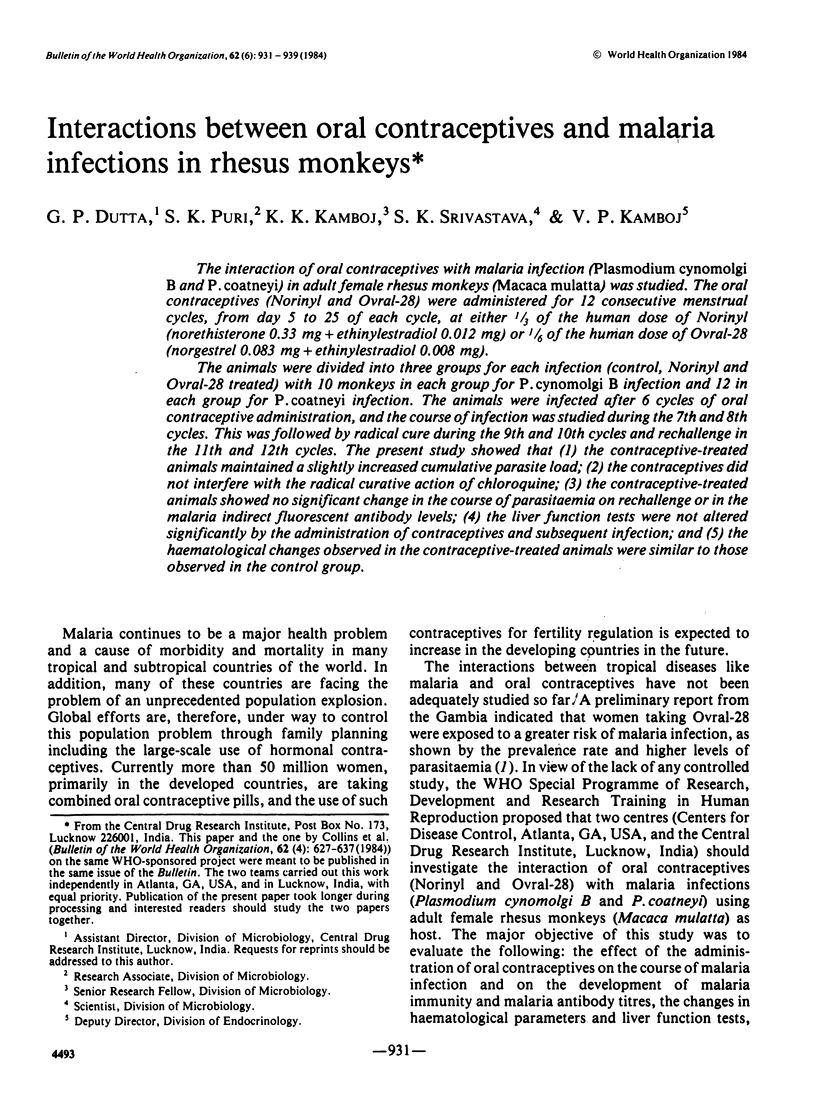

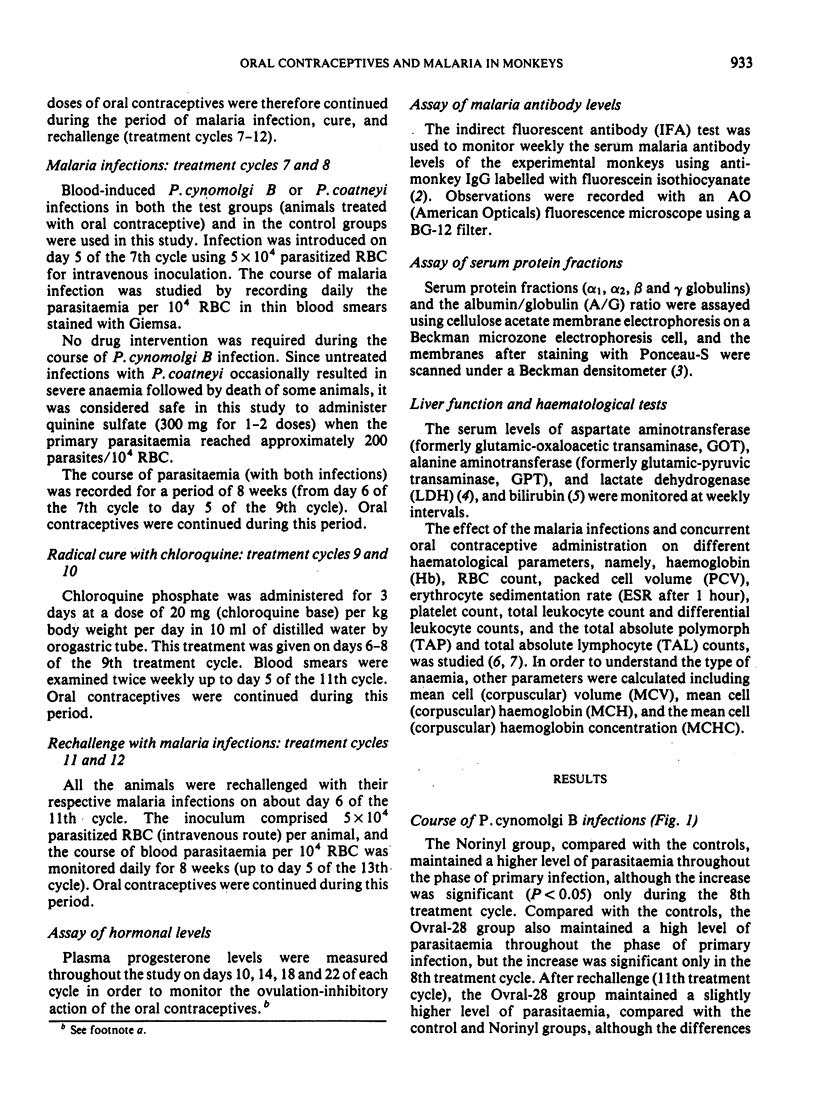
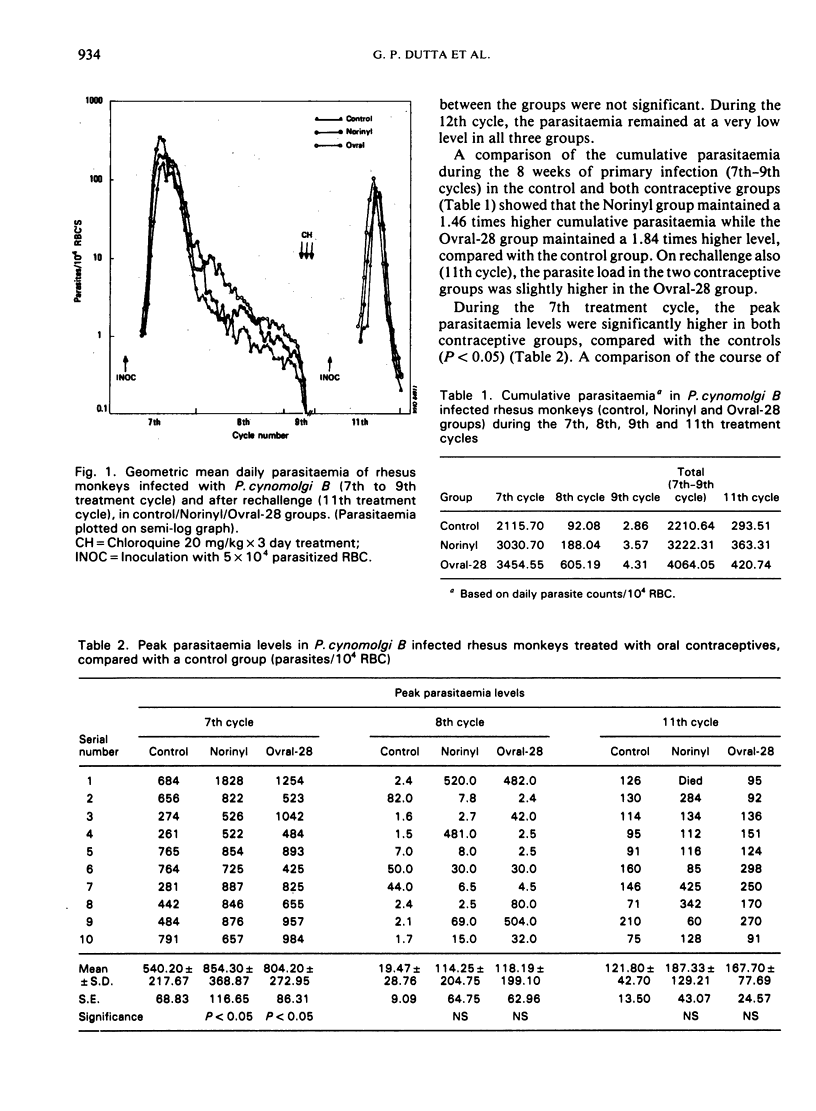
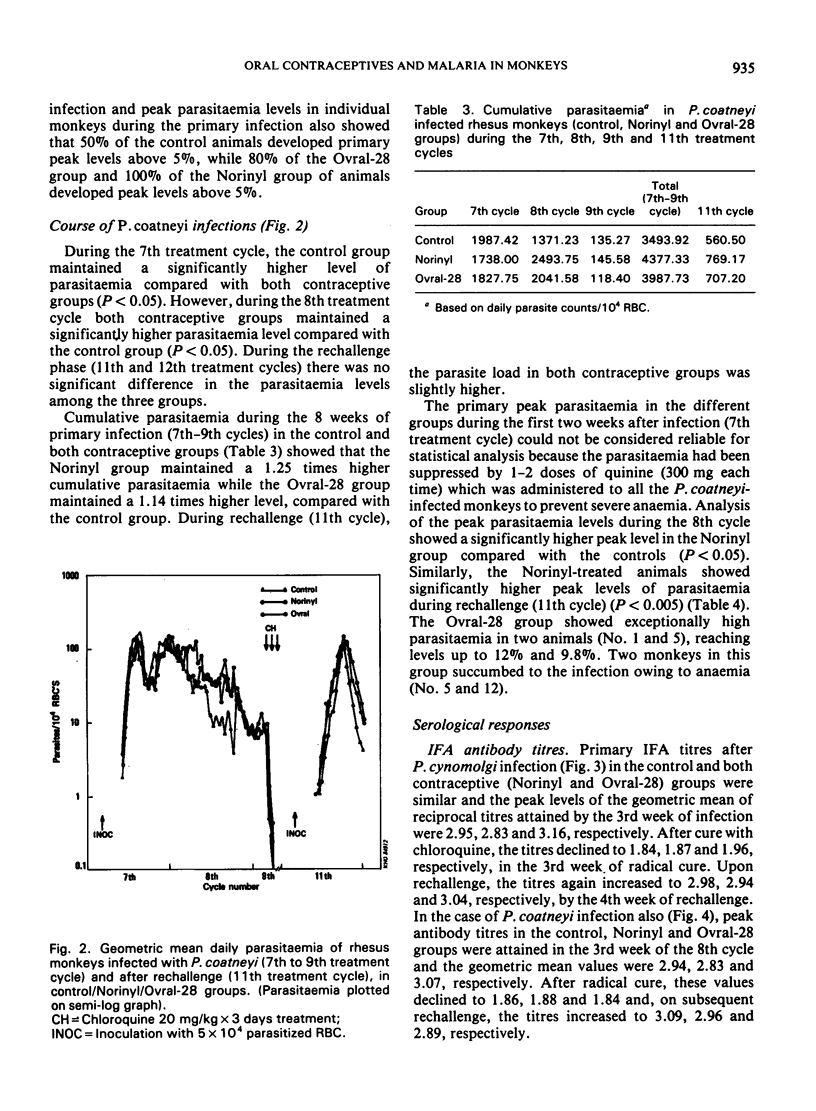
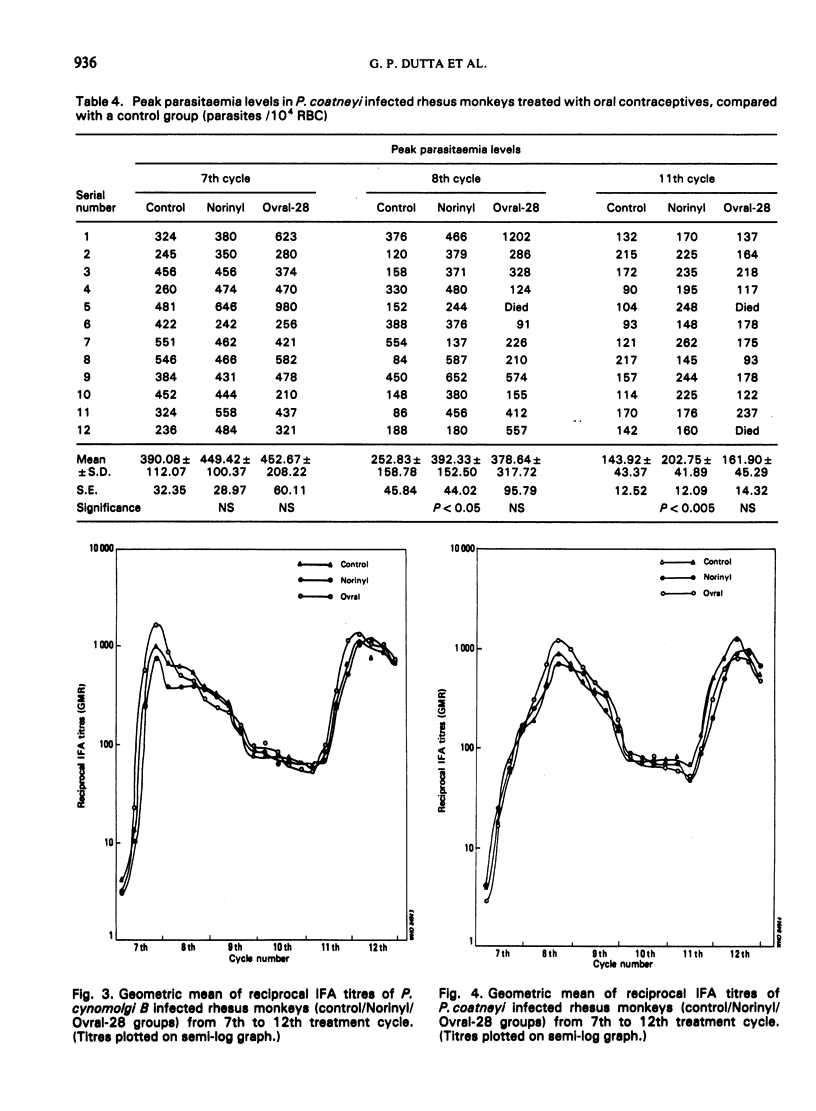

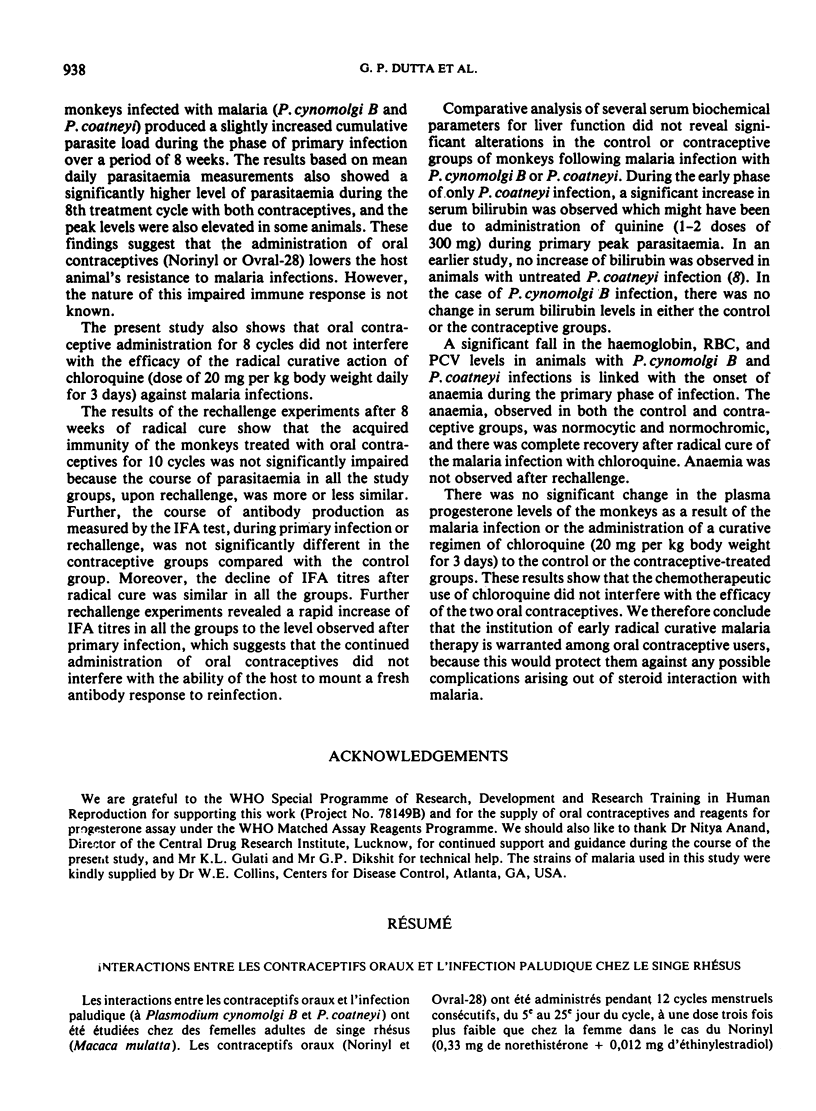

Selected References
These references are in PubMed. This may not be the complete list of references from this article.
- Collins W. E., Skinner J. C. The indirect fluorescent antibody test for malaria. Am J Trop Med Hyg. 1972 Sep;21(5):690–695. doi: 10.4269/ajtmh.1972.21.690. [DOI] [PubMed] [Google Scholar]


